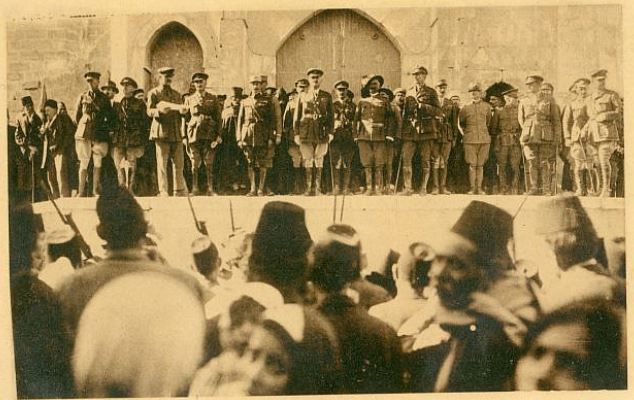Inventors of Your Favourite Pants
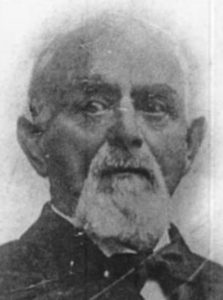
Jacob Davis
Jakobs Jufess (1831-1908) was born in Riga, Latvia. He became a tailor before immigrating to the US at age 23. Upon arriving in New York, he changed his name to Jacob Davis and opened up a tailor shop. Over the next 15 years, he moved all across North America trying to make a living, spending time in Maine, California, Nevada, and British Columbia, working as a tobacco salesman, gold miner, and brewer. By 1869, Davis settled in Reno, Nevada and opened another tailor shop. His primary merchandise was originally tents, horse blankets, and wagon covers. To make his stuff stronger and more durable, he started using the toughest cotton denim he could find, which happened to come from a small dry goods store in San Francisco called Levi Strauss & Co.
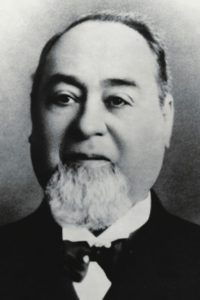
Levi Strauss, the name behind Levi’s jeans.
Levi Strauss (1829-1902) was born in Buttenheim, Germany. When he was 18 years old, his family immigrated to the US, joining two older brothers that had settled in New York some years earlier. The brothers had set up a dry goods shop, and Levi went on to open a new store location in Louisville, Kentucky. During the California Gold Rush, the family saw opportunity in the West and opened another branch in San Francisco. Strauss headed that branch (together with his sister’s brother, David Stern), importing from his brothers in the East and selling high-quality merchandise at his Levi Strauss & Co. shop. He became very wealthy, and built San Francisco’s first synagogue, Temple Emanu-El. Strauss gave generously to many charities, too, and his Levi Strauss Foundation donated to multiple orphanages and universities (including UC Berkeley). In 1871, Strauss received an offer from Jacob Davis to go into business together. Davis had designed a new type of work pants using blue denim and copper rivets to make the material extra strong. The first set of such “jeans” was custom-tailored for a lumberjack. Before long, everyone wanted a pair, and Davis couldn’t keep up with demand. Strauss helped Davis get the proper patents, and the two partnered up. To make his jeans distinct, Davis soon started to sew the back pockets with the now-ubiquitous orange double-stitch. Meanwhile, Strauss built a large jeans factory in San Francisco and Davis moved there to run the plant. Davis worked at the plant for the rest of his life, outfitting every miner, railroad worker, and cowboy with “Levi’s jeans”, his special pants. The modern jeans that Davis and Strauss brought to the world grew rapidly in popularity, first in the workforce, then among teenagers and “greasers” in the 50s and 60s, and today being the most popular type of pants in the world.
Coronavirus and the Coming of Mashiach
Words of the Week
Few are guilty; all are responsible.

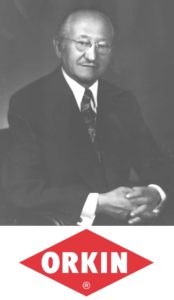 Otto Orkin (1885-1968) was born in Latvia to a traditional Jewish family that immigrated to Pennsylvania when he was three years old. The family settled on a farm, and Otto’s job as a child was to make sure the rats didn’t eat their stocks. The neighbours soon heard of his success, and asked the young Otto to take care of their pests, too. At 14, Otto borrowed 50 cents from his parents to invest in a supply of arsenic, and began experimenting to find the perfect blend of rat poison. He spent hours in attics and granaries watching rat behaviour and carefully studying them. The young Orkin became an expert at rat control, and began selling his services door-to-door. At 16, he founded his own pest control company, Orkin The Rat Man. He continued growing the business, travelling across the country to sell his revolutionary formulas and methods. In 1909, he found that Richmond, Virginia did not have a pest exterminator and settled there. In 1925, Orkin’s company won its first government contract to get rid of rats for the Army Corps of Engineers. During this time, he found that Atlanta, Georgia also did not have an exterminator, and soon moved his headquarters there, renaming the business to Orkin Exterminating Company. It was also during this time that he introduced the diamond-shaped logo now famous across North America. By 1930, Orkin had 13 permanent branches in 8 states, and fifteen years later 82 branches in 14 states. During World War II, Orkin played a huge role in assisting the war effort by providing chemicals and pest control, and making sure that over 150 military installations were sanitary. The company continued to grow, and by 1950 had over 1000 employees operating in 20 states. This rapid growth was partly fueled by Orkin’s famous generosity. He paid very good salaries and all of his managers made more money than he did himself. It was also fueled by great marketing, especially the popular “Otto the Orkin Man” TV commercial – thought to be the most recognizable jingle in America at the time. Unfortunately, Orkin’s sons soon sought to wrest control of the company from him. He eventually gave in and sold his shares. The company went downhill after that, and was bought out by Rollins Inc. in 1964. Orkin continued to be a generous philanthropist until his last days. Beloved by all those who knew him, one employee said of Orkin that he had “a singleness of purpose, a goal he never lost sight of, and he worked tirelessly and diligently to achieve that goal. His was the epitome of the American Dream we hear so much about. His contribution to the industry is inestimable.”
Otto Orkin (1885-1968) was born in Latvia to a traditional Jewish family that immigrated to Pennsylvania when he was three years old. The family settled on a farm, and Otto’s job as a child was to make sure the rats didn’t eat their stocks. The neighbours soon heard of his success, and asked the young Otto to take care of their pests, too. At 14, Otto borrowed 50 cents from his parents to invest in a supply of arsenic, and began experimenting to find the perfect blend of rat poison. He spent hours in attics and granaries watching rat behaviour and carefully studying them. The young Orkin became an expert at rat control, and began selling his services door-to-door. At 16, he founded his own pest control company, Orkin The Rat Man. He continued growing the business, travelling across the country to sell his revolutionary formulas and methods. In 1909, he found that Richmond, Virginia did not have a pest exterminator and settled there. In 1925, Orkin’s company won its first government contract to get rid of rats for the Army Corps of Engineers. During this time, he found that Atlanta, Georgia also did not have an exterminator, and soon moved his headquarters there, renaming the business to Orkin Exterminating Company. It was also during this time that he introduced the diamond-shaped logo now famous across North America. By 1930, Orkin had 13 permanent branches in 8 states, and fifteen years later 82 branches in 14 states. During World War II, Orkin played a huge role in assisting the war effort by providing chemicals and pest control, and making sure that over 150 military installations were sanitary. The company continued to grow, and by 1950 had over 1000 employees operating in 20 states. This rapid growth was partly fueled by Orkin’s famous generosity. He paid very good salaries and all of his managers made more money than he did himself. It was also fueled by great marketing, especially the popular “Otto the Orkin Man” TV commercial – thought to be the most recognizable jingle in America at the time. Unfortunately, Orkin’s sons soon sought to wrest control of the company from him. He eventually gave in and sold his shares. The company went downhill after that, and was bought out by Rollins Inc. in 1964. Orkin continued to be a generous philanthropist until his last days. Beloved by all those who knew him, one employee said of Orkin that he had “a singleness of purpose, a goal he never lost sight of, and he worked tirelessly and diligently to achieve that goal. His was the epitome of the American Dream we hear so much about. His contribution to the industry is inestimable.” Abraham Tzvi Idelsohn (1882-1938) was born in Latvia to a religious Jewish family. He studied to be a synagogue cantor. At 27, he made aliyah to Israel and worked as a musician and composer. In 1919, he opened a Jewish music school. A few years later, he left for Ohio where he served as professor of Jewish music at Hebrew Union College, the major seminary of Reform Judaism. Between 1914 and 1932 he published his ten-volume magnum opus, Thesaurus of Hebrew Oriental Melodies. Many consider him “the father of Jewish musicology”. His most famous melody is undoubtedly ‘Hava Nagila’. In December of 1917, British army general Edmund Allenby defeated the Ottomans and conquered the Holy Land for Great Britain. The Jews of Israel were elated, and celebrated the general’s arrival in Jerusalem. They asked Idelsohn to compose a song for the special occasion. Idelsohn remembered an old happy tune he had adapted from a Hasidic niggun. The song was a hit. A few years later, he asked his music class to write words for the song.
Abraham Tzvi Idelsohn (1882-1938) was born in Latvia to a religious Jewish family. He studied to be a synagogue cantor. At 27, he made aliyah to Israel and worked as a musician and composer. In 1919, he opened a Jewish music school. A few years later, he left for Ohio where he served as professor of Jewish music at Hebrew Union College, the major seminary of Reform Judaism. Between 1914 and 1932 he published his ten-volume magnum opus, Thesaurus of Hebrew Oriental Melodies. Many consider him “the father of Jewish musicology”. His most famous melody is undoubtedly ‘Hava Nagila’. In December of 1917, British army general Edmund Allenby defeated the Ottomans and conquered the Holy Land for Great Britain. The Jews of Israel were elated, and celebrated the general’s arrival in Jerusalem. They asked Idelsohn to compose a song for the special occasion. Idelsohn remembered an old happy tune he had adapted from a Hasidic niggun. The song was a hit. A few years later, he asked his music class to write words for the song.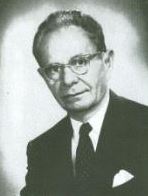 A young Moshe Nathanson (1899-1981) was in that class, and wrote a couple of simple lines based on Scriptural verses from Psalm 118. The rest is history. Nathanson was born in Jerusalem, the son of a rabbi. In 1922 he moved to Canada and double-majored in law and music at McGill University. He ended up studying at what is now the prestigious Julliard School of Music in New York. From there, he was hired to be the cantor of the first Reconstructionist Synagogue, and served in that role for the next 48 years. He wrote an important four-volume tome of liturgical songs. Nathanson also spent 10 years broadcasting Jewish music on American airwaves (“Voice of Jerusalem”) and dedicated much of his life to promoting Jewish folk music. Today, Nathanson’s and Idelsohn’s ‘Hava Nagila’ is the most recognizable Jewish/Hebrew song in the world, and a staple of every bar mitzvah and wedding. There is even a full-length documentary about it, called Hava Nagila (The Movie). This past year marked the song’s centennial anniversary.
A young Moshe Nathanson (1899-1981) was in that class, and wrote a couple of simple lines based on Scriptural verses from Psalm 118. The rest is history. Nathanson was born in Jerusalem, the son of a rabbi. In 1922 he moved to Canada and double-majored in law and music at McGill University. He ended up studying at what is now the prestigious Julliard School of Music in New York. From there, he was hired to be the cantor of the first Reconstructionist Synagogue, and served in that role for the next 48 years. He wrote an important four-volume tome of liturgical songs. Nathanson also spent 10 years broadcasting Jewish music on American airwaves (“Voice of Jerusalem”) and dedicated much of his life to promoting Jewish folk music. Today, Nathanson’s and Idelsohn’s ‘Hava Nagila’ is the most recognizable Jewish/Hebrew song in the world, and a staple of every bar mitzvah and wedding. There is even a full-length documentary about it, called Hava Nagila (The Movie). This past year marked the song’s centennial anniversary.